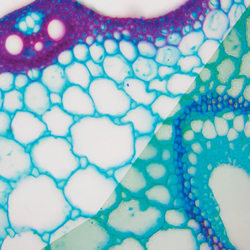Design, Integration, and Application of Intelligent Biomaterials
 Intelligent Biomaterials materials are defined as a class of advanced materials that integrate biological components or living cells with synthetic materials, designed to exhibit adaptive and dynamic functionalities such as self-regulation, self-healing, and environmental responsiveness. With the advancement of biomaterials and bioelectronics science, these intelligent materials can be integrated into various systems, and ultimately endow them with real-time environmental sensing and adaptive biofunction adjustments. Currently, frontier research mainly focuses on exploring the versatile applications of these systems in flexible wearable electronics, tissue engineering scaffolds that mimic biological structures, and smart textiles with embedded sensing capabilities. While clinical applications remain important, this emerging research direction prioritizes fundamental design principles for stimuli-responsive materials, bioelectronic/biomaterial system integration, and scalable manufacturing methods and extended biomedical applications
Intelligent Biomaterials materials are defined as a class of advanced materials that integrate biological components or living cells with synthetic materials, designed to exhibit adaptive and dynamic functionalities such as self-regulation, self-healing, and environmental responsiveness. With the advancement of biomaterials and bioelectronics science, these intelligent materials can be integrated into various systems, and ultimately endow them with real-time environmental sensing and adaptive biofunction adjustments. Currently, frontier research mainly focuses on exploring the versatile applications of these systems in flexible wearable electronics, tissue engineering scaffolds that mimic biological structures, and smart textiles with embedded sensing capabilities. While clinical applications remain important, this emerging research direction prioritizes fundamental design principles for stimuli-responsive materials, bioelectronic/biomaterial system integration, and scalable manufacturing methods and extended biomedical applications
Topics covered include, but are not limited to:
- Material Design: Design and fabrication of intelligent materials that include stimuli-responsive polymers, piezoelectric composites, and nanofibrous scaffolds with tailored mechanical/electrochemical properties, etc.
- Integrated Smart Systems: Integration of intelligent materials into flexible bioelectronics and engineered bio-scaffolds for wearable health monitoring and adaptive tissue repair.
- Pre-clinical and Clinical Validation: Preclinical demonstration and validation of these intelligent systems/devices for disease diagnosis and advanced therapeutics.
- Hydrogel and Fiber-Based materials for Wound Healing and Tissue Repair: Design, mechanistic Insights, and translational potential.
Guest Editors
Shuo Shi; Joint Research Center for Fiber Innovations and Renewable Materials, School of Fashion and Textiles,The Hong Kong Polytechnic University
Xiaoyun Yan; School of Emergent Soft Matter, South China University of Technology
Xiaoyu Chen; School of Biomedical Science and Engineering, South China University of Technology
Qiang Zhang; Department of Biomedical Engineering, City University of Hong Kong
Tianpeng Xu; Orthopedic and Sports Medicine Center, The Affiliated Suzhou Hospital of Nanjing Medical University
Yanting Han; West China Hospital, Sichuan University
Yuanzhang Jiang; College of Biomass Science and Engineering, Sichuan University
